SPECIAL RELEASE
The Philippine Statistics Authority (PSA) Quirino is the provincial branch of the national agency responsible for producing and managing official statistics in Quirino province. It plays a key role in collecting, analyzing, and disseminating data about the population, including detailed breakdowns by gender, such as male and female statistics.
PSA Quirino gathers vital information on various demographic and socio-economic factors, highlighting differences and trends between males and females in the province. This includes population counts, employment, education, health, and civil registration data such as births, deaths, and marriages, disaggregated by gender. These gender-specific statistics are crucial for understanding the unique needs and conditions of both men and women in Quirino.
By providing accurate and gender-sensitive data, PSA Quirino supports local government units and policymakers in creating programs that promote equality, address disparities, and improve the welfare of all residents. The agency ensures that both male and female populations are considered in planning and development initiatives, making it a vital institution for inclusive growth in Quirino province.
WOMEN AND MEN OF PSA QUIRINO
Figure 1 Women and Men of PSA Quirino by Type of Employment
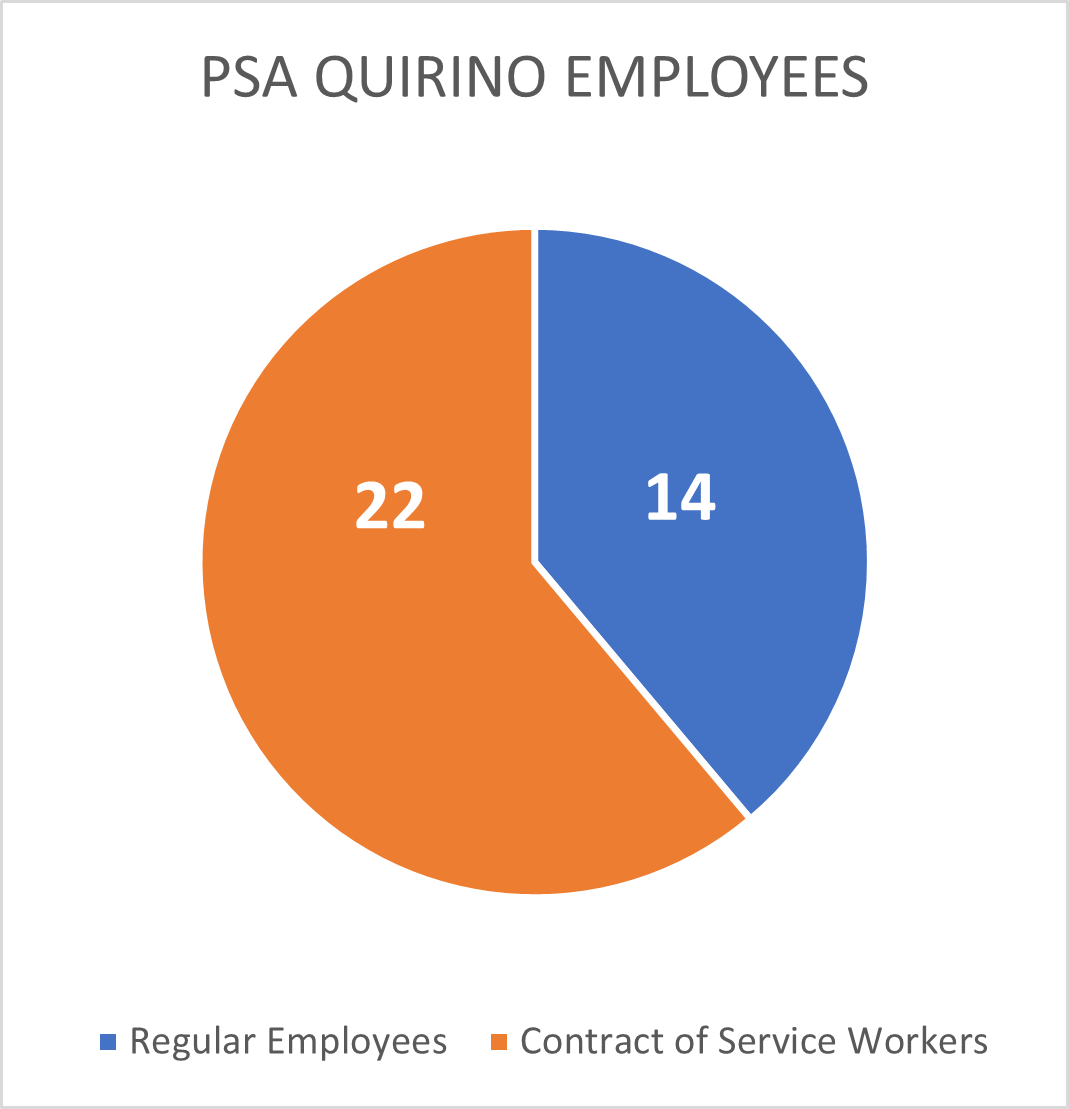
Figure 2 Women and Men of PSA Quirino by Sex
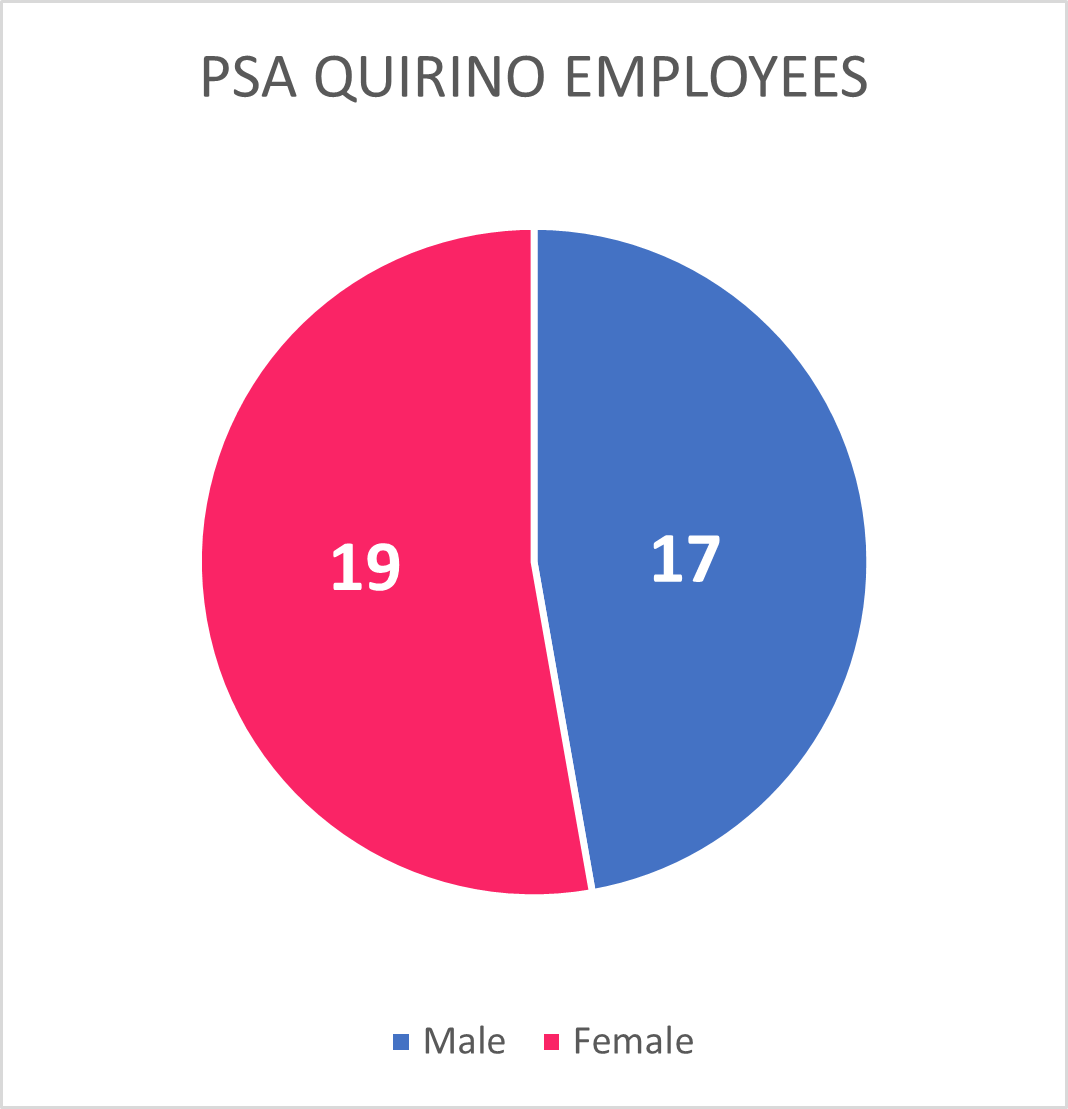
Figure 1 and 2 provide an overview of the composition of PSA Quirino employees based on employment type and gender. The first chart indicates that out of a total of 36 employees, 14 are regular employees while 22 are contract of service workers. This means that a significant portion (approximately 61%) of the workforce is employed under contract of service arrangements, highlighting a potential reliance on temporary or non-permanent staff. The second chart reveals the gender distribution, showing a relatively balanced workforce with 17 males and 19 females. While males make up about 47% of the employees, females constitute around 53%, indicating slight female predominance. Overall, the data reflects a fairly gender-balanced workforce, but with a notable skew towards non-regular employment
.
Figure 3 Women and Men of PSA Quirino by Age Group
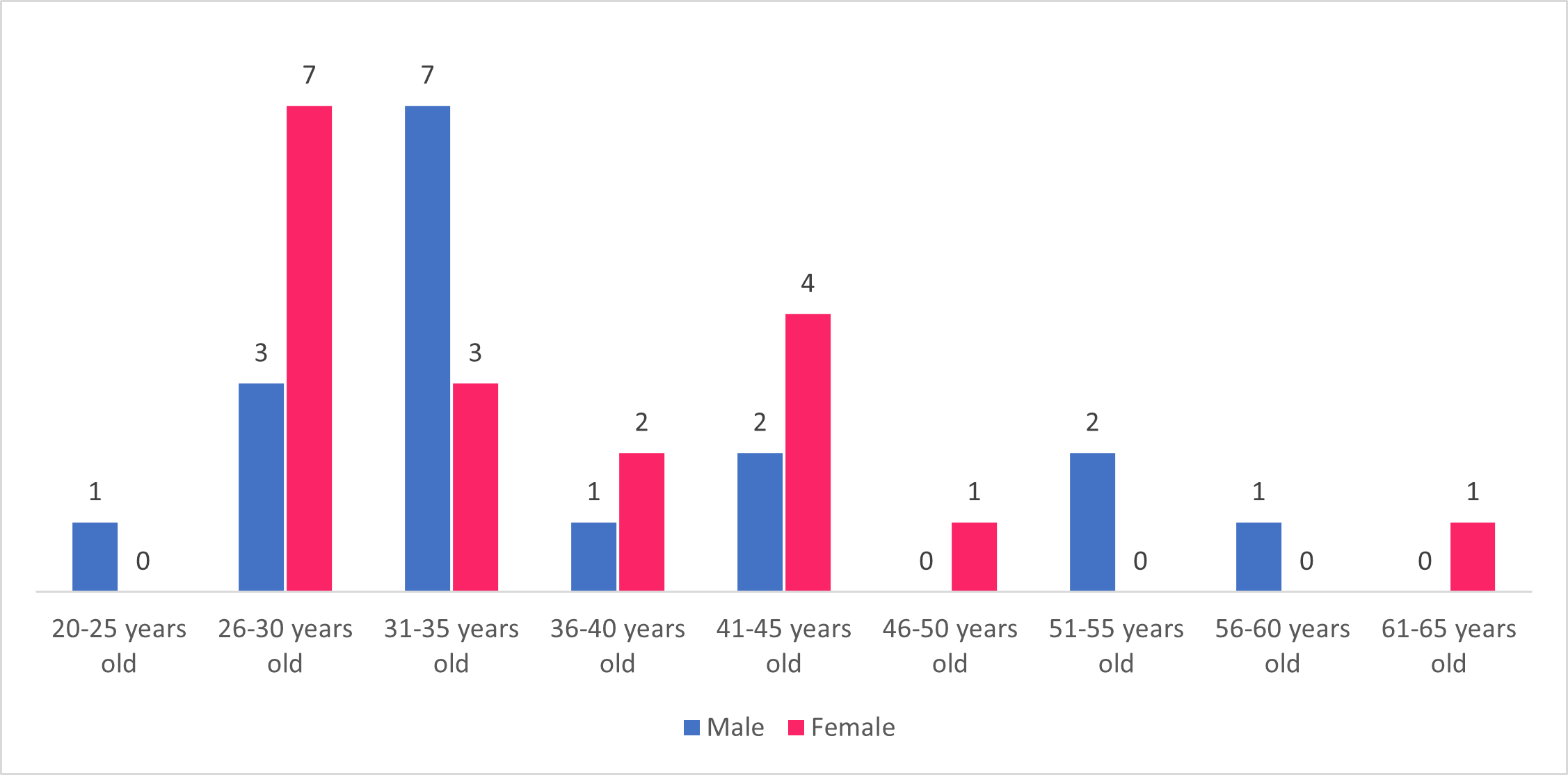
In Figure 3, illustrates the age and gender distribution of PSA Quirino employees, revealing several important workforce trends. The most represented age groups are 26–30 and 31–35 years old, each with a total of 10 employees. In the 26–30 age group, females (7) significantly outnumber males (3), while in the 31–35 bracket, males dominate with 7 compared to 3 females. This concentration of younger employees suggests a relatively youthful workforce.
As age increases, the number of employees in each bracket generally declines. The 41–45 age group has a modest representation with 2 males and 4 females, while older age groups (46–65 years) show a sharp decrease in numbers, with only 1 or 2 individuals per group, mostly male. Notably, there are no female employees beyond the age of 50, except for a single female in the 61–65 range, indicating a possible gender imbalance in retention or recruitment at older ages.
WOMEN AND MEN APPLICANTS OF LABOR FORCE SURVEY AND FAMILY INCOME AND EXPENDITURES SURVEY (LFS/FIES)
Figure 4 Women and Men of LFS/FIES Applicants by Sex
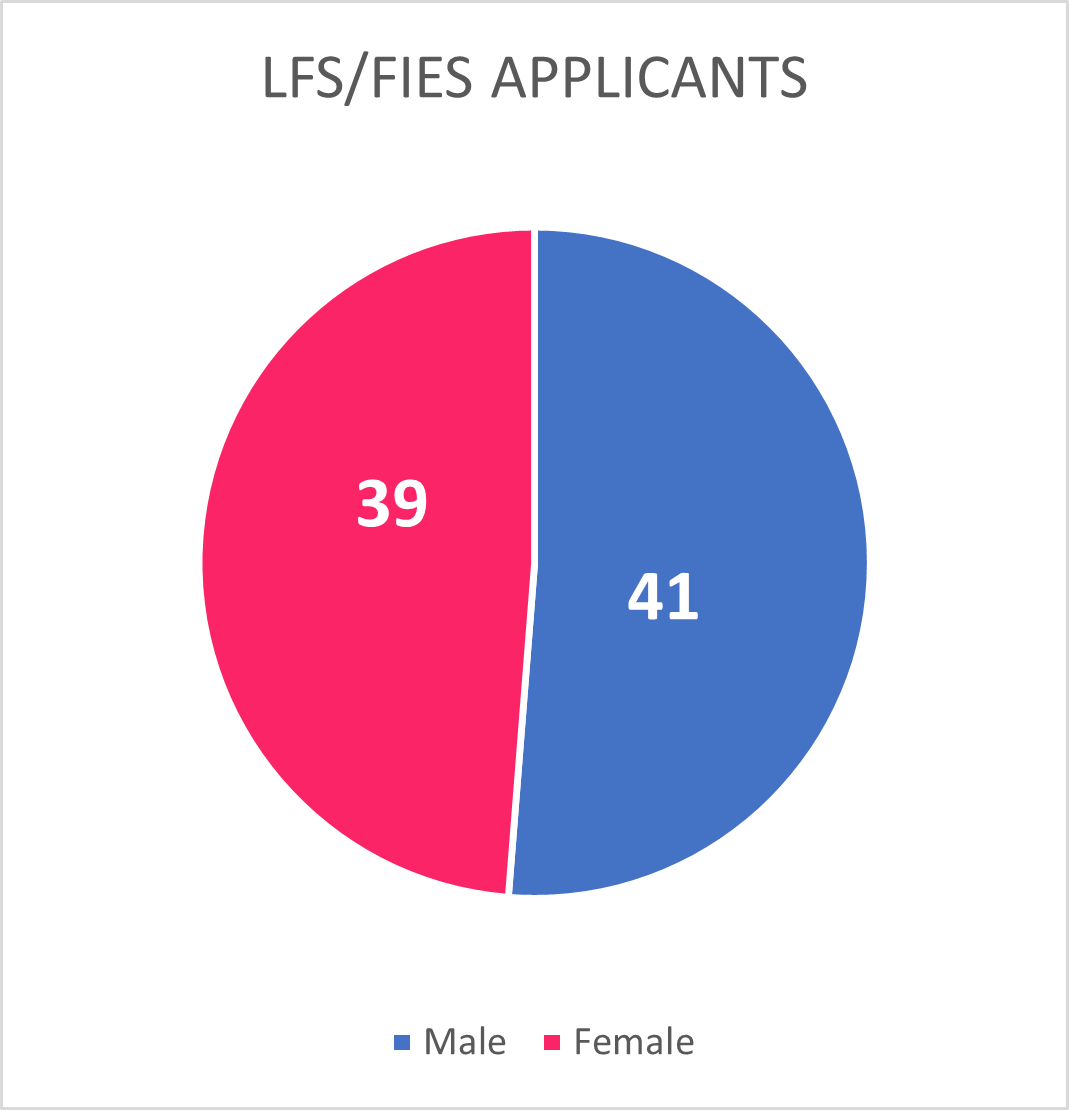
In Figure 4,it displays the gender distribution of LFS/FIES applicants, showing a nearly equal split between male and female candidates. Out of a total of 80 applicants, 41 are male (51.25%) and 39 are female (48.75%). This minimal difference suggests that both genders are almost equally interested in or eligible for participation in the LFS/FIES programs. The balanced gender ratio is a positive indicator of inclusivity and equal opportunity in the application process. It may also reflect the general accessibility and appeal of the program to a diverse applicant pool.
Figure 5 Women and Men of LFS/FIES Hired Personnel by Sex
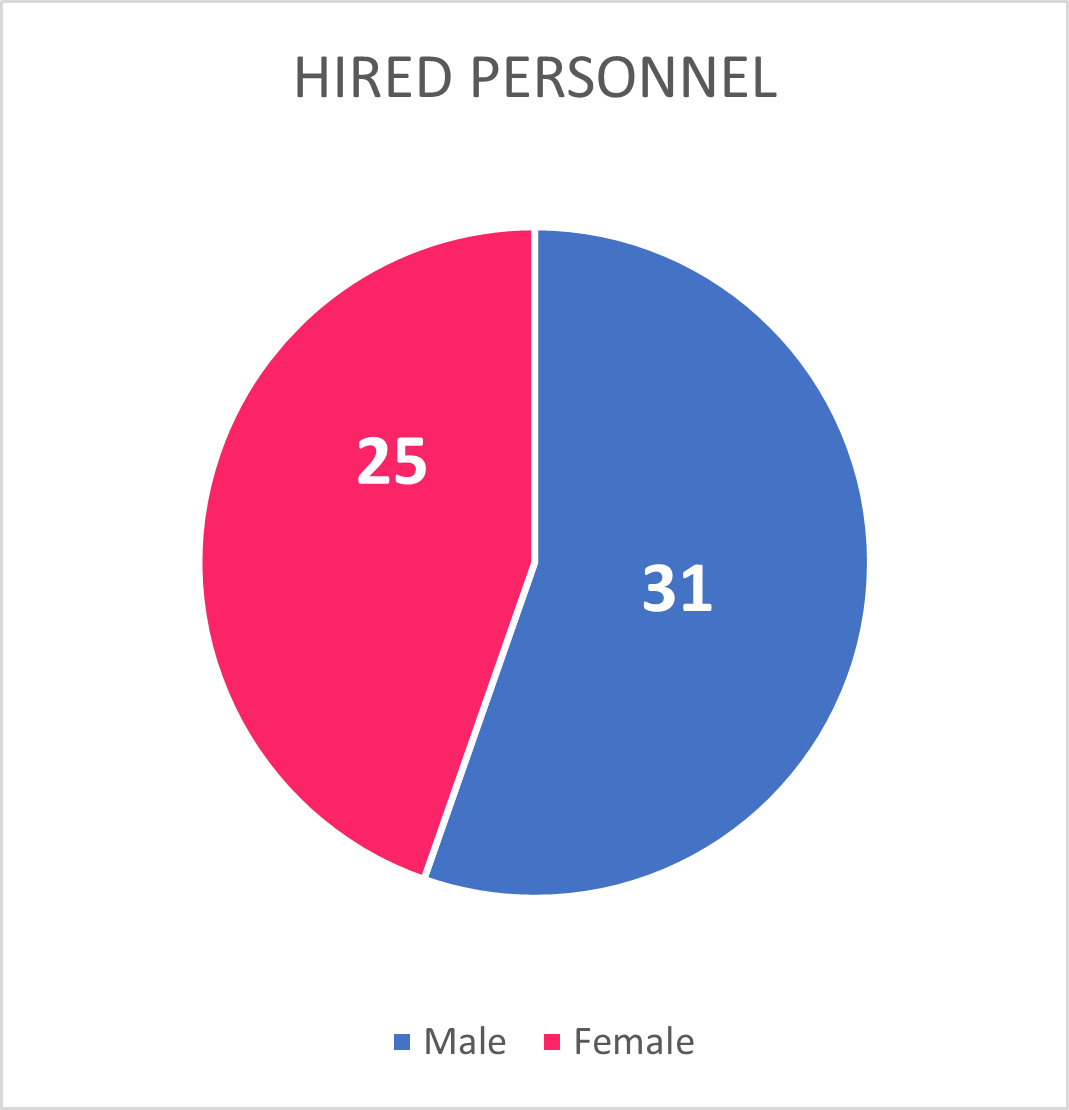
In Figure 5, it illustrates the gender distribution of hired personnel for the LFS/FIES project. Out of a total of 56 individuals hired, 31 are male and 25 are female. This translates to approximately 55.4% male and 44.6% female, indicating a slight male majority among the hired personnel.
When compared to the earlier chart showing applicant distribution (41 males and 39 females), the hiring results reflect a balanced recruitment outcome. Both genders were hired in similar proportions relative to their application rates, suggesting a fair and unbiased selection process.
Figure 6 Women and Men of LFS/FIES Applicants by Municipality
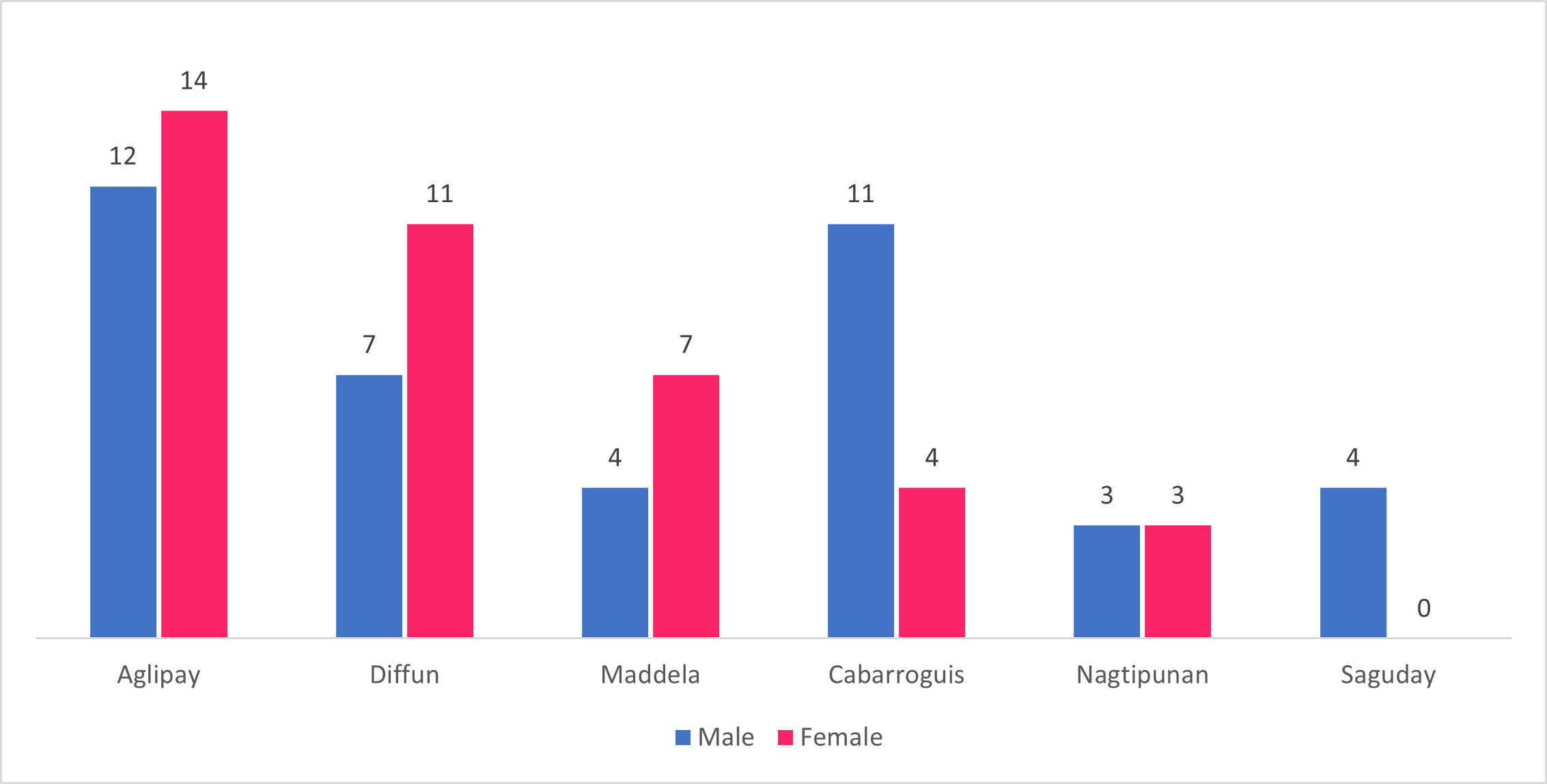
In Figure 6, it presents the distribution of hired personnel for the LFS/FIES project across various municipalities in Quirino Province, broken down by gender. The municipalities include Aglipay, Diffun, Maddela, Cabarroguis, Nagtipunan, and Saguday.
Aglipay has the highest number of hires overall, with 12 males and 14 females, showing a slight female majority. Diffun follows, hiring 7 males and 11 females, again indicating a stronger female presence. Maddela also leans female, with 7 females and 4 males hired.
In contrast, Cabarroguis shows a male-dominated hiring pattern with 11 males compared to just 4 females. Nagtipunan maintains gender balance, hiring 3 males and 3 females. Saguday is the only municipality where only males (4) were hired, with no female hires recorded.
Figure 7 LFS/FIES Applicants by Age Group
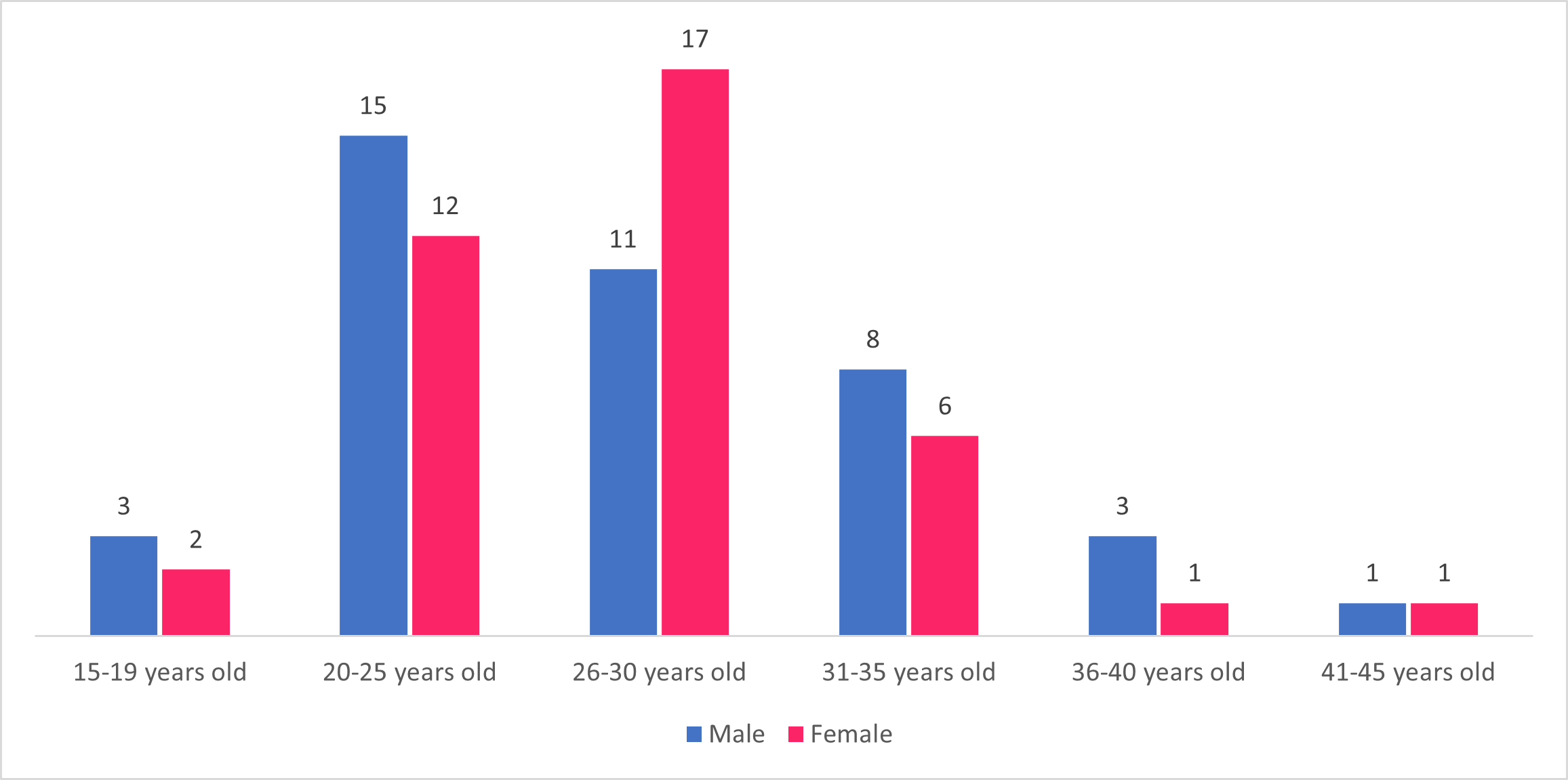
In Figure 7,The age and gender distribution of hired personnel for the LFS/FIES project reveals a workforce primarily composed of younger individuals, particularly those in their 20s. The largest group falls within the 26–30 age range, with 17 females and 11 males hired, showing a notable female majority. This is followed by the 20–25 age group, where males slightly outnumber females (15 males to 12 females). The 31–35 age bracket also shows active participation, with 8 males and 6 females. However, beyond the age of 35, the number of hires drops significantly. Only a handful of individuals were hired in the 36–40 and 41–45 age groups, with minimal gender differences. The youngest group, aged 15–19, had the fewest hires overall.
WOMEN AND MEN APPLICANTS OF 2025 Updating of List of Agricultural Farm Operators and Inland Fishing Households and 2025 Listing of Marine Fish Landing Centers (ULAFO-LMFLC)
Figure 8 Women and Men of ULAFO-LMFLC Applicants by Sex
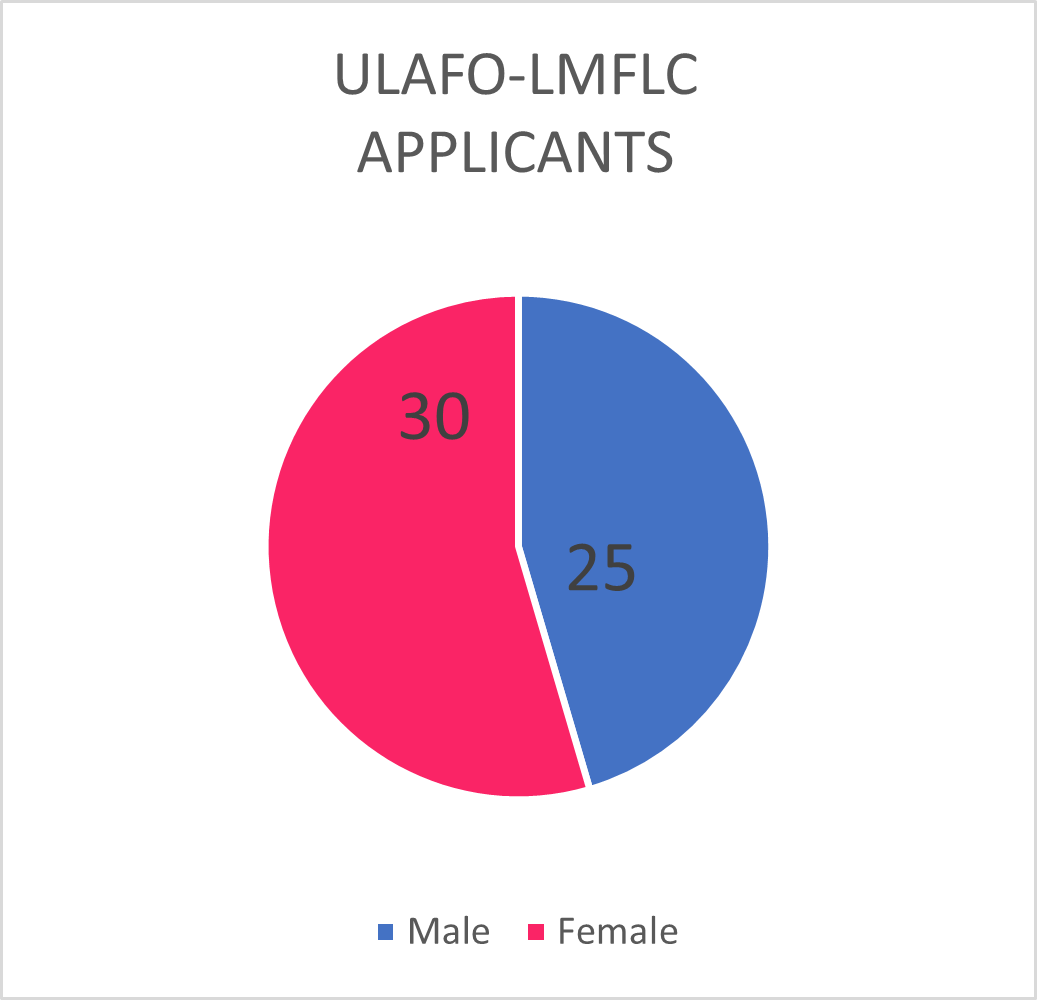
Figure 9 Women and Men of ULAFO-LMFLC Hired Personnel by Sex
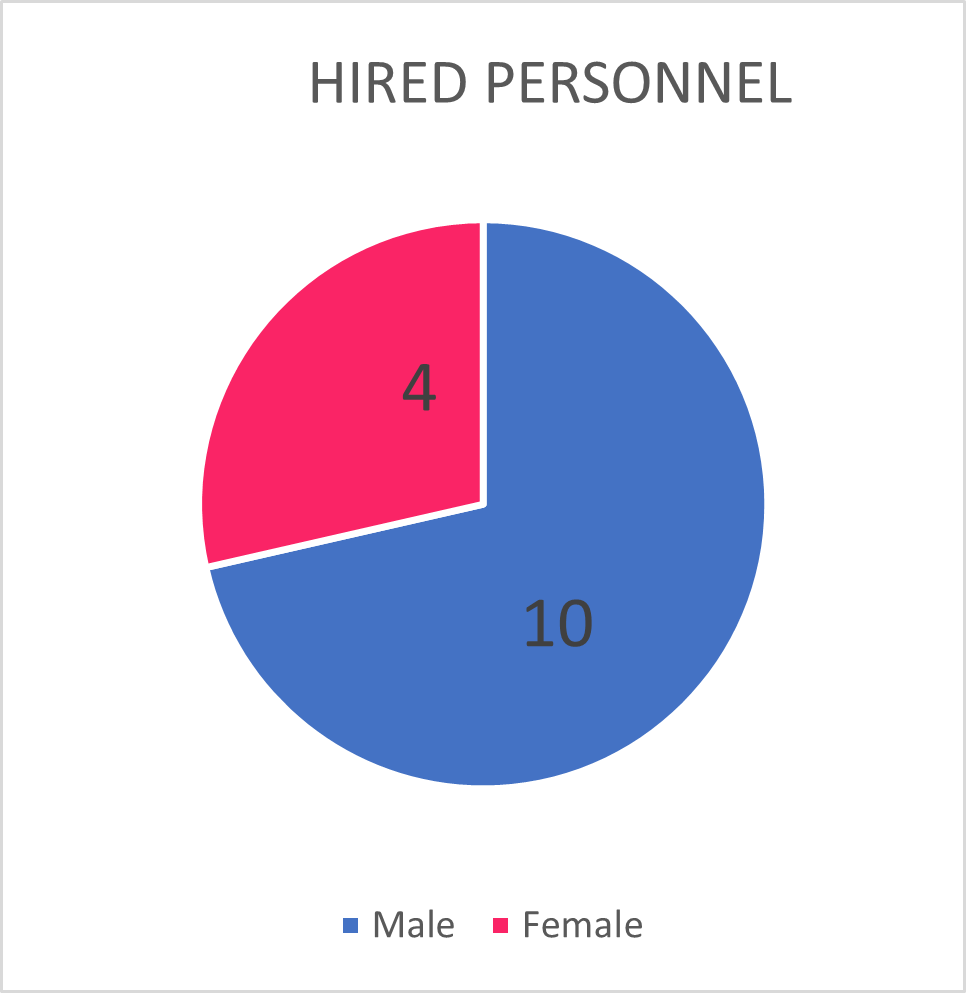
In Figure 8 and 9, it presents the gender distribution of applicants and hired personnel for the ULAFO-LMFLC project. Among the applicants, there were 30 females and 25 males, indicating a slightly higher interest or participation from female candidates. However, the hiring outcome shows a reversal of this trend: 10 males were hired compared to only 4 females. Despite females making up most of the applicant pool, males were hired at more than twice the rate of females.
Figure 10 Women and Men of ULAFO-LMFLC Applicants by Municipality
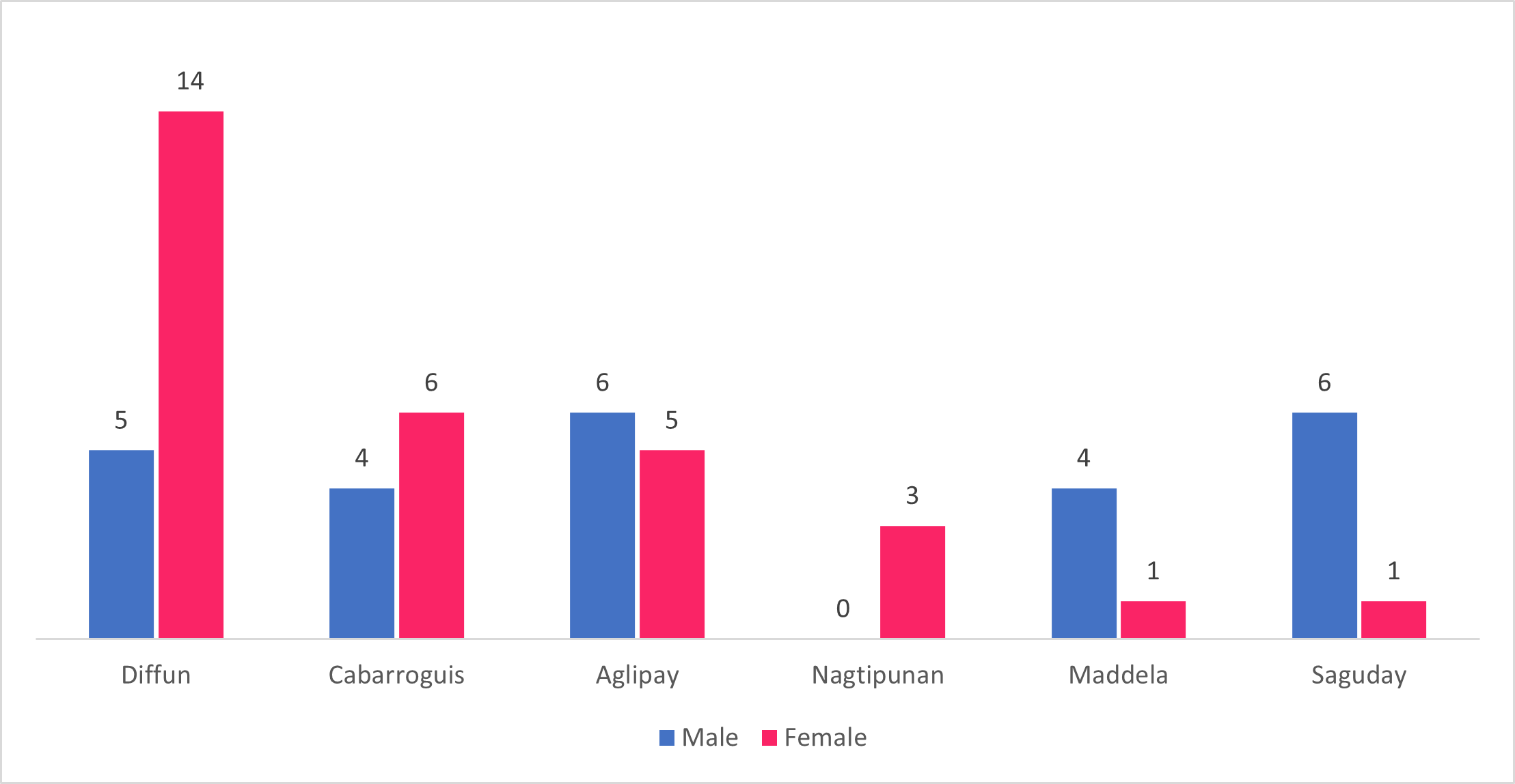
In Figure 10, shows the distribution of ULAFO-LMFLC hired personnel across different municipalities in Quirino Province, broken down by gender. Diffun stands out with the highest number of hires, particularly females, with 14 females and 5 males, indicating a strong female presence in that area. In Cabarroguis, females also outnumber males (6 to 4), while Aglipay has a balanced hiring pattern with 6 males and 5 females.
In contrast, Nagtipunan hired only 3 females and no males, while Maddela hired more males (4) than females (1). Saguday also shows a gender gap in the opposite direction, with 6 males hired and only 1 female.
Figure 11 ULAFO-LMFLC Applicants by Age Group
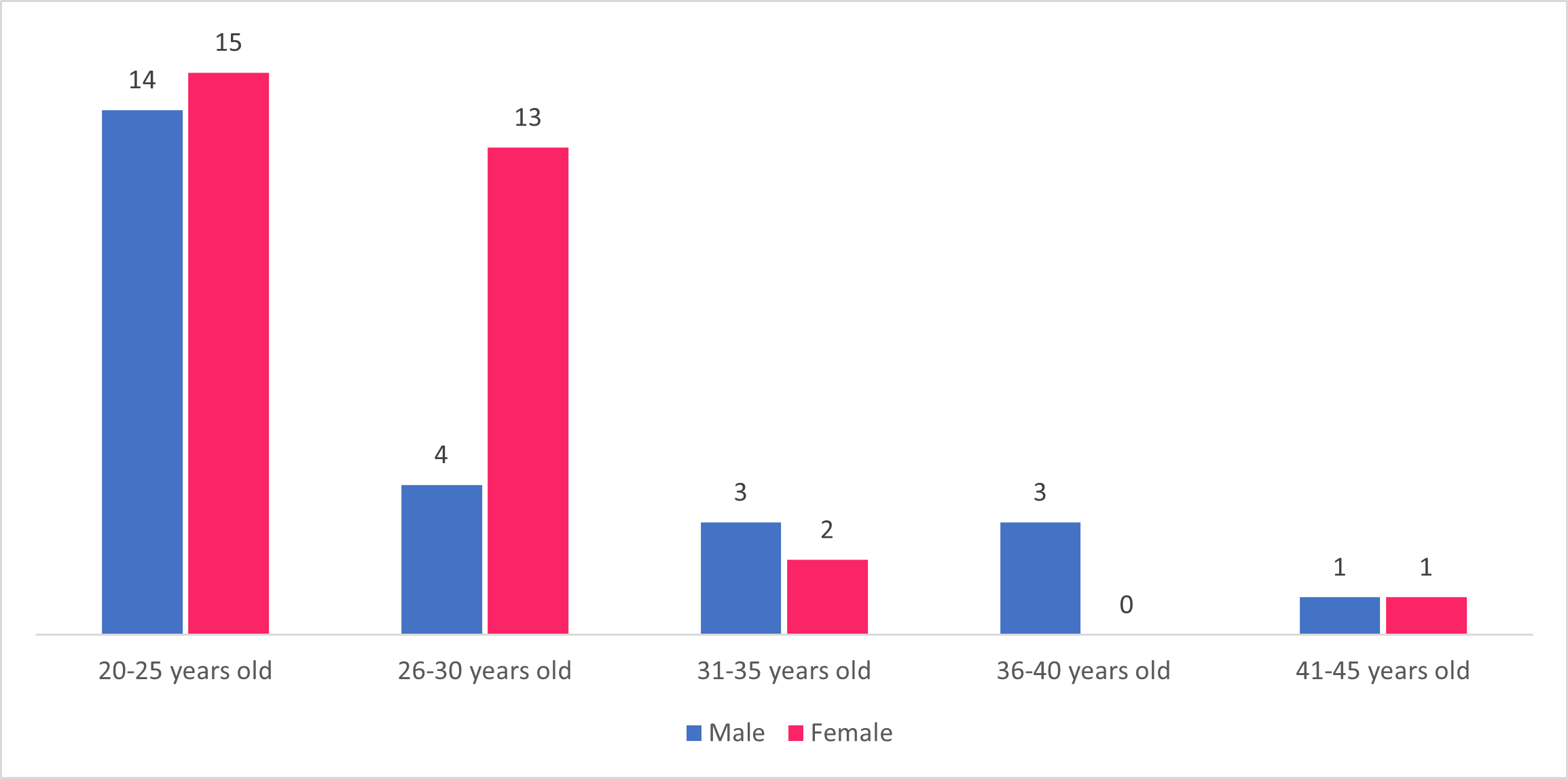
In Figure 11, it illustrates the age and gender distribution of hired personnel under the ULAFO-LMFLC project. The data shows a strong preference for younger individuals, particularly those aged 20–25 years old, with 15 females and 14 males hired—making this the most represented age group. The next most significant group is 26–30 years old, with 13 females and 4 males, indicating a substantial female dominance in this bracket.
As age increases, the number of hires decreases significantly. In the 31–35 age group, there were only 3 males and 2 females hired, followed by 3 males and no females in the 36–40 group. The 41–45 age group had just 1 male and 1 female.
ENGR. CHERRY GRACE D. AGUSTIN
Chief Statistical Specialist
Cgda/jbg
